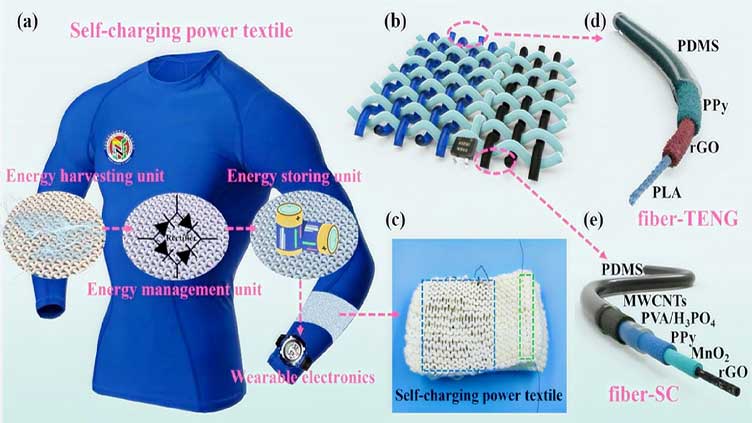Fabric developed to generate electricity from body heat

Technology
The fabric offers possibilities for health checks, and activity tracking
(Web Desk) - In the near future, there could be coats made from smart fabric that use the sun’s energy to keep us warm.
Researchers at the University of Waterloo showcased one such smart fabric technology.
This innovative material has been designed to convert both body heat and sunlight into electricity. And the best part? This technology eliminates the need for bulky batteries to power the cloth. This makes it an easy-to-wear, stretchy fabric.
The smart fabric’s functionality can be enhanced when integrated with sensors. This way, the fabric could be used to monitor heart rate and temperature, and even detect chemicals in your breath.
“We have developed a fabric material with multifunctional sensing capabilities and self-powering potential. This innovation brings us closer to practical applications for smart fabrics,” said Yuning Li, a professor in the Department of Chemical Engineering.
The research team has successfully combined advanced materials like MXene and conductive polymers with cutting-edge textile production methods. MXenes and conductive polymers are materials known for their high electrical conductivity and flexibility.
By applying a sticky polydopamine (PDA) layer to the nylon fabric, the team created a surface that attracts MXene particles through hydrogen bonds. This combined structure results in a stretchy thermoelectric fabric.
Most wearable electronics today require external power or regular recharge, but this innovative fabric eliminates the need for batteries entirely. The researchers stress that this novel fabric is more stable, durable, and cost-effective than existing market choices.
“AI technology is evolving rapidly, offering sophisticated signal analysis for health monitoring, food and pharmaceutical storage, environmental monitoring, and more.
However, this progress relies on extensive data collection, which conventional sensors, often bulky, heavy, and costly, cannot meet,” said Li, director of Waterloo’s Printable Electronic Materials Lab.
“Printed sensors, including those embedded in smart fabrics, are ideal for continuous data collection and monitoring. This new smart fabric is a step forward in making these applications practical.”
When embedded into a mask, the fabric converts body heat into electricity using the temperature difference between the body and the environment. This enables accurate respiratory rate monitoring.
As per the press release, these smart masks could monitor breath temperature and rate, while also detecting chemical indicators for viruses, lung cancer, and other diseases.
Even more intriguing, this innovative fabric could also be used to assess joint health.
“Exceptional strain sensing capabilities of the MXene-based thermoelectricfabric, facilitating the monitoring of the body’s joint conditions through its deformation,” the study paper noted.
Even athletes could use this fabric to track performance, eliminating bulky wearables.
Up next, the team plans to enhance the fabric’s performance and combine it with electronic components. They also have plans to create a smartphone application that would collect and transmit health data directly to healthcare providers.



